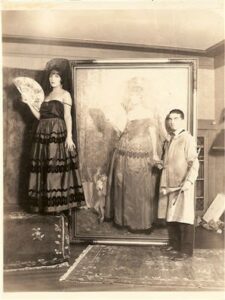Theodore N. Lukits (1897-1992)
Available Work
Archives
Biography
Press and Publications
Theodore Nicolai Lukits Featured in Plein Air Magazine Summer 2012 Issue
By incorporating decorative motifs with influences from numerous other artistic traditions, this master artist brought his paintings to an elevated level of beauty. On a recent trip to Los Angeles, …
Continue Reading »












 Among the many hundreds of painters that comprise the relatively recent, but illustrious history of California art, the career of Theodore Nikolai Lukits stands out as unique in its variety, complexity, breadth and quality. Lukits was a well‑trained and astute draftsman as well as a brilliant colorist and fastidious craftsman. He ground his own paints, made his own pastels, created customized palettes, crafted his own brushes, and carved and gilded his own frames. By teaching for more than 60 years, he made a lasting contribution to the dissemination of the ideals and techniques of 19th century French ateliers and academies.
Among the many hundreds of painters that comprise the relatively recent, but illustrious history of California art, the career of Theodore Nikolai Lukits stands out as unique in its variety, complexity, breadth and quality. Lukits was a well‑trained and astute draftsman as well as a brilliant colorist and fastidious craftsman. He ground his own paints, made his own pastels, created customized palettes, crafted his own brushes, and carved and gilded his own frames. By teaching for more than 60 years, he made a lasting contribution to the dissemination of the ideals and techniques of 19th century French ateliers and academies.




